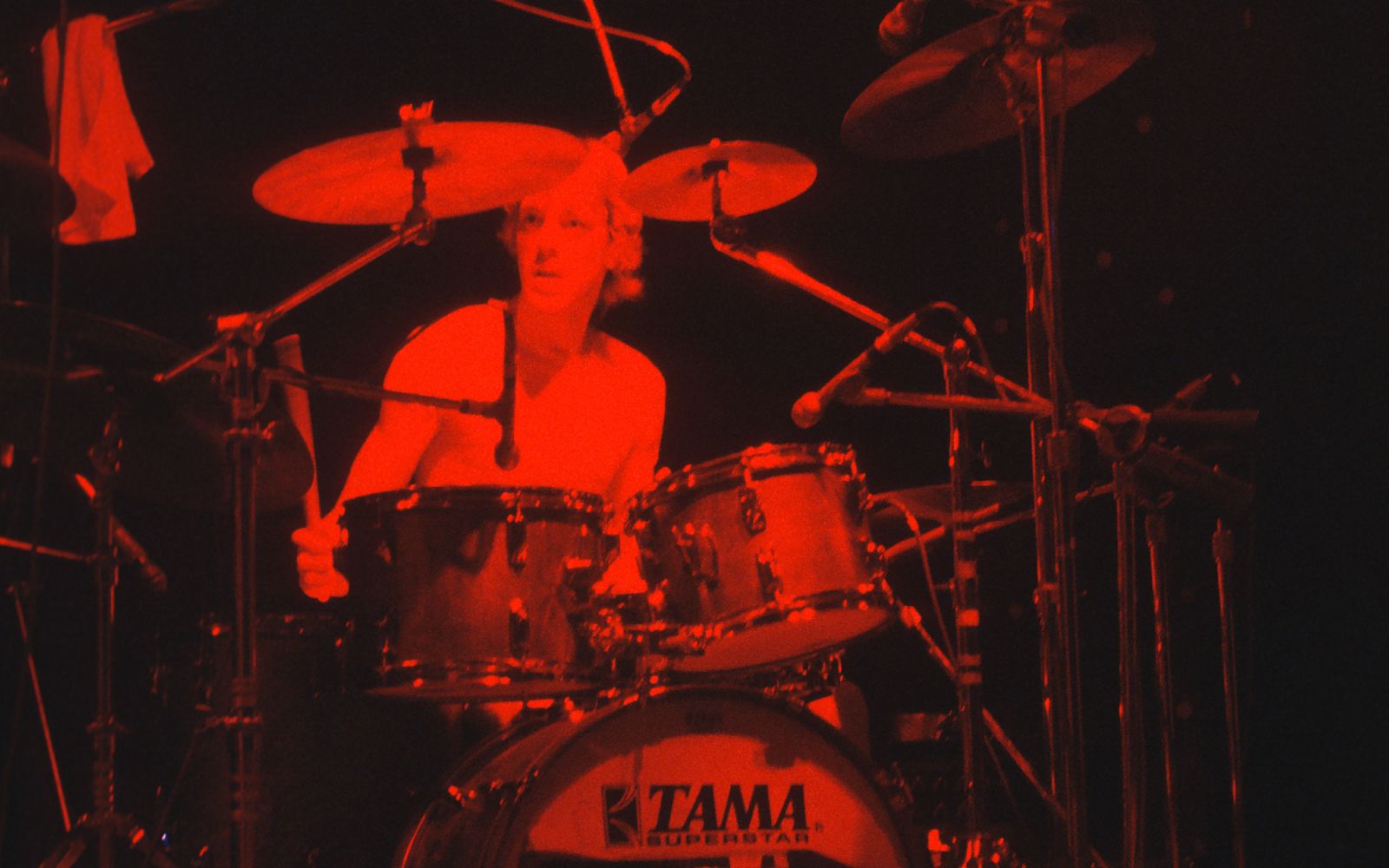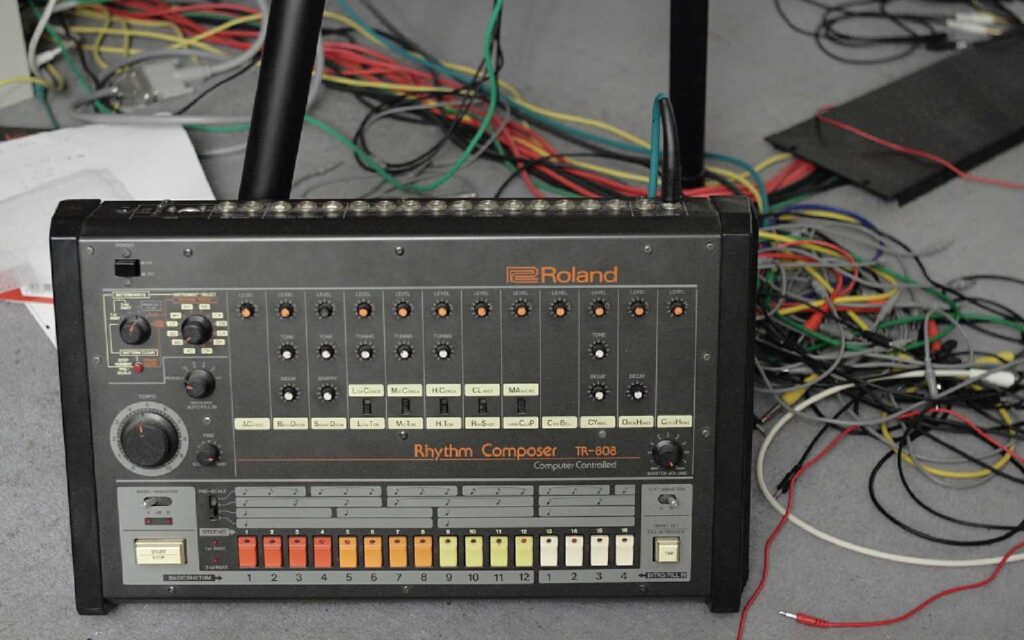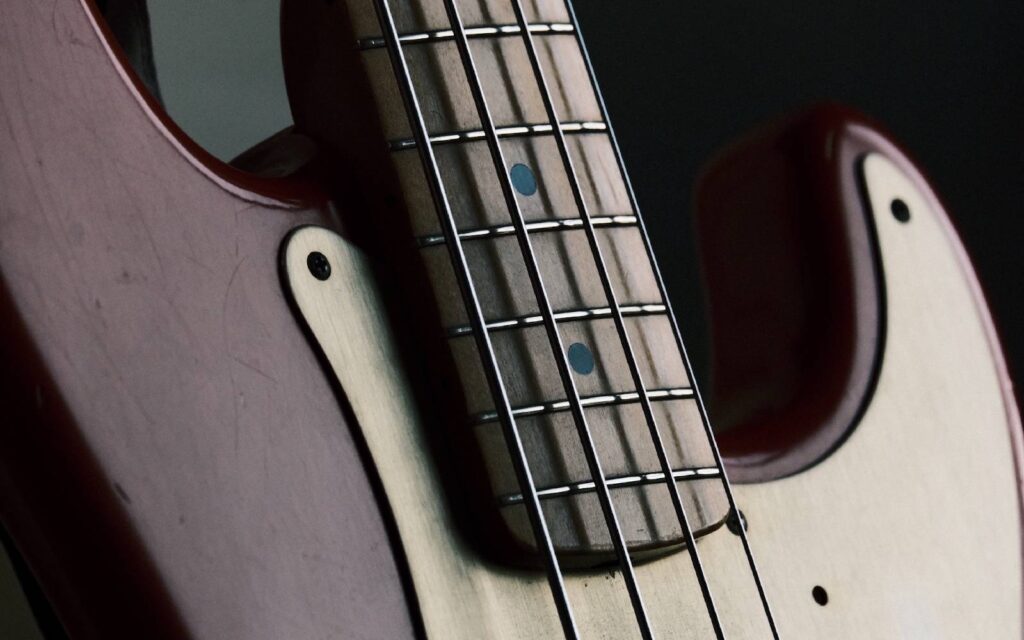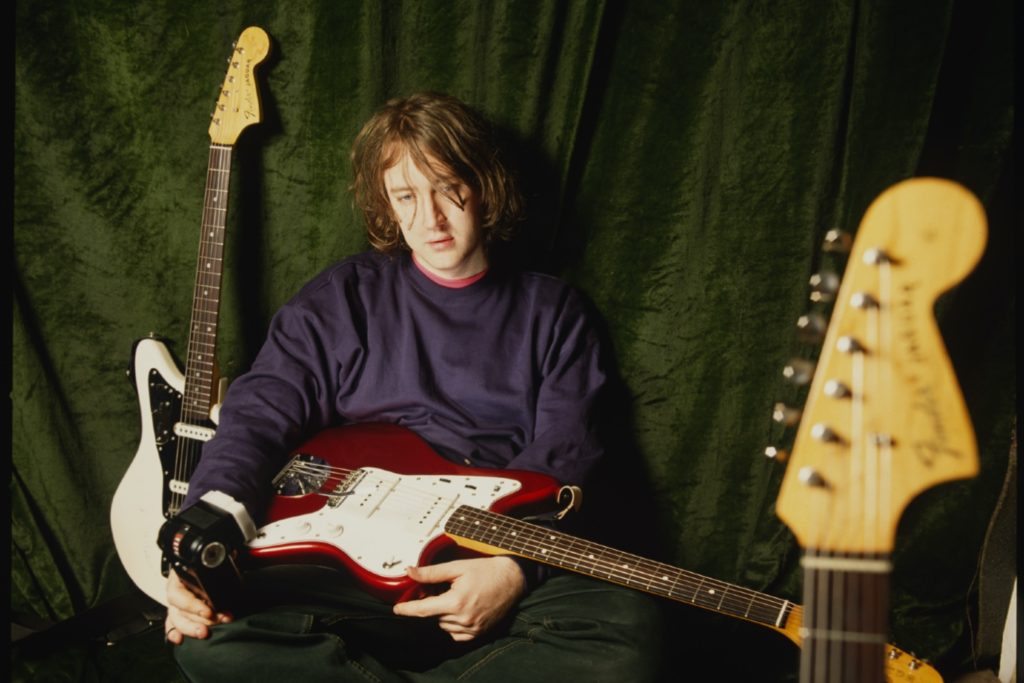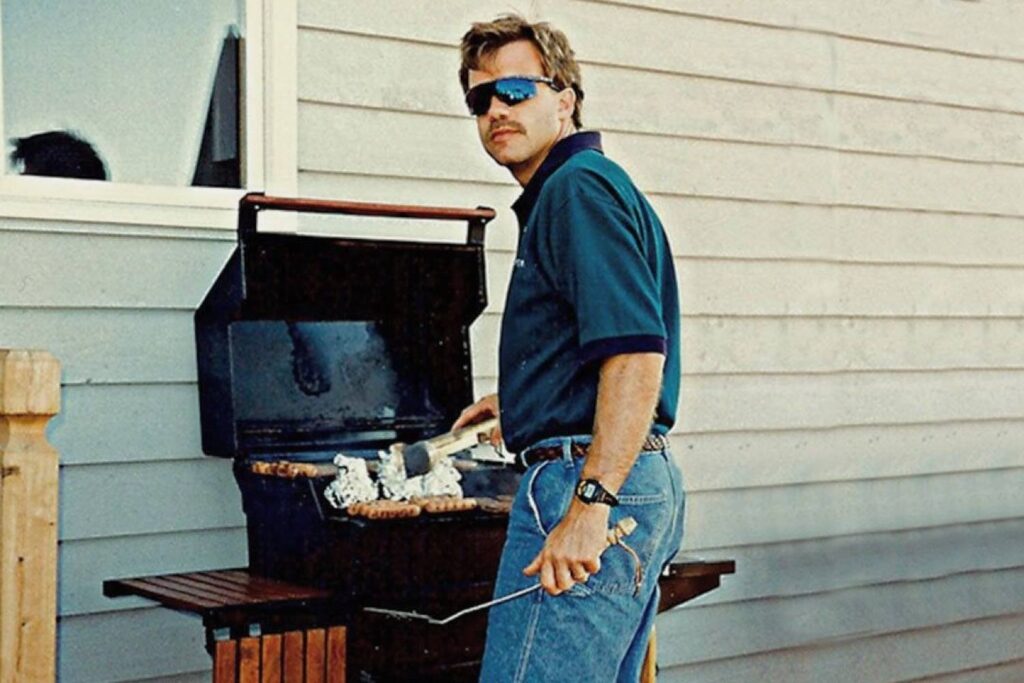About 10% of the world’s population are left-handed. 30% are both.
Scientific studies claim southpaws are more likely at a risk for psychosis, to be elected to office, better attuned to sports, more prone to drinking and get embarrassed more quickly. A study by Fretbase found only about 10% of guitar players are left-handed. Sadly, there are no such stats for drummers.
But a study this year by Marc Dicciani of the University of the Arts in Philadelphia summed up: Handedness: Are Drummers Right-handed or Left-handed? They’re Neither and Both!
Read up on all the latest features and columns here.
Both Hands
Dicciani, a drummer himself, reported that drummers like many other musicians – notably orchestral string players, flutists, pianists, timpanists and vibraphonists – have to use both hands.
Dicciani wrote: “a drum set is not a right or left-handed instrument, and it’s best to approach it as a two-handed one where both hands are coordinated, and work together in tandem with the right and left foot.”
RINGO STARR
“I was born left handed but my grandmother decided the devil or witches had me, so she forced me to write with my right hand.
“But I play darts and golf with my left hand.”
Liverpool
In Liverpool in the 1950s there were no left handed kits. “So I have a right handed kit, which gives me more versatility, but I lead with my left.”
You can hear him lead with his left at the start of “Ticket To Ride” and the rolls on “Come Together”. See more below:
96 bpm
Also check out “Rain”, “Tell Me Why” (snare/tom interplay), “Act Naturally” (keeping 96 beats per minute for two and a half minutes), the Latin R&B feel inspired by Ray Charles records and 175 bpm on “I Feel Fine”.
The repetitious loop-like approach on “Tomorrow Never Knows” was to create the trance effect of John Lennon’s vision of hundred monks chanting on a mountain top.
The Ringster also once pointed out that it’s hard for copyists to replicate his fills because he virtually dances when he plays and makes the songs come alive.
STEWART COPELAND
According to Stewart Copeland, “I’m left-handed, but I play instruments right-handed.
“It’s just more convenient that way. And because most instruments require both hands to be working real hand, I find that you have to be ambidextrous.
“Like most left-handed people, I am close to being fully ambidextrous.”
Stunning Work
Copeland’s stunning work and vision, especially with The Police and his soundtrack work, came from the fact that his influences were so diverse.
Aside from the mid-60s jazz-inspired British drummers as Ginger Baker and Mitch Mitchell of the Jimi Hendrix Experience, he grew up listening to the classical and jazz collections of his parents and later punk’s attack.
Having a father who was a CIA operative, Copeland spent a lot of time in the Middle East, picking up on its speedy polyrhythmic.
Rhythmic
Very often, as on “Regatta De Blanc”, “Wrapped Around Your Finger” and “Every Little Thing She Does Is Magic” uses such rhythmics not used by mainstream rock drummers.
Throw in the effects on “Walking On The Moon”, ride triplets on “Murder By Numbers”, his experimentation of cymbal sounds and habit of tuning the tom and snare up, and you got some of the best drum work in the rock era.
Grip
One analyst wrote: But what I find very interesting about his playing is that he uses his own personalized version of a traditional grip.
“As opposed to the stick going through your middle and ring fingers and using your index to control speed, he puts it directly from his thumb through to his index and middle finder, which gives him more power.”
IAN PAICE
Ian Paice of Deep Purple/Whitesnake fame, learned early to deal with being a left-handed drummer, especially in hard rock’s early days.
“I do certain things right handed, like eating with a fork or if I’m batting (at cricket), he explained in an on-line interview.
“It’s good you’re doing different things with different hands.
One Sided
“It helps as a drummer you don’t do everything one-sided, especially when you’re doing four different things at the same time.”
He also learned to play powerfully despite a childhood medical affliction since he was six.
The myth is that Paice only has one lung. That is not true. But he is missing a portion of the lower lobe in his left lung, due to contracting pneumonia which turned into tuberculosis.
Industrial Gloves
With Purple, he popularised using heavy industrial gloves when he played, even at rehearsals when the band would play with the full gear which once got them in the Guinness Book of Records as loudest band in the world.
It was for a 1972 show at the London Rainbow Theatre, during which the sound reached 117 dB and three in the crowd fell unconscious.
Cut Back
These days he’s cut back on the size of his kit, with Pearl drumkits, Paiste cymbals, Remo drumheads and Pro-Mark drumsticks.
But in the ‘70s and early ‘80s it was a massive Ludwig with 26″ bass, 16″ tom, an 18 & 20″ floor tom and 14 x 6.5″ Supraphonic snare which was a blueprint for his signature snare from Pearl.
The 26”
“I got the idea of the 26” from seeing John Bonham, this was before Led Zeppelin when he was playing with (folk singer) Tim Rose.
“I got a company in Chicago to build one for me, because it gave me a different sound, like a cannon.”
Highlights
His skins highlights include the power-drive of “Highway Star”, “Black Night”, “Fireball” with hard rock’s first double bass intro, “Mandrake Root” and the live “The Mule” and “Lazy” from Made In Japan.
Paice not only inspired the likes of Lars Ulrich and Chad Smith but his fast hand-foot combinations proved to be a blueprint for grindcore and death metal.
BILLY COBHAM
American jazz fusion drummer Billy Cobham is not left-handed.
But in a remarkable career that included stints with Miles Davis and John McLaughlin’s Mahavishnu Orchestra, and a groundbreaking solo album Spectrum (1973), he set his kit up where he’d play hi-hat/snare with his left hand.
Massive
His kit was massive, with two bass drums and an array of tom toms and cymbals that let his technique move fast to delivered some stunning sounds.
It came naturally to him, he told Modern Drummer in 2017, “Primarily because I always led, even though I lead with my right, going left to right.
Ride Cymbal
“I always thought it was a bit easier to play your ride cymbal and your hi-hat in the same general area.
“Therefore, it made me use my left hand a lot more than I would have if I had my ride cymbal over towards my right.”
He went on to say, “I have dexterity and stamina primarily because I use the left hand to play ride rhythms.”
Philosophy
This was not something he was taught but from a philosophy he developed.
Asked by the magazine about any exercises he used to develop that particular style of playing, Cobham replied, “There were no real exercises outside of the finger control thing.
High Speed
“I just played in a lot of high speed situations where I had to play a lot of notes per bar with my left hand.
“Because of that, the muscles in my hand naturally developed.”
Panama
Cobham was born in 1944 in Panama, into a family of drummers which built congas and steel drums and sold them throughout the Caribbean.
When he was three, the family moved to New York where he began playing drums at four and given a drum kit at 14 when he entered the High School of Music & Art.
Training
He didn’t have any training but he knew enough about the ins and outs of drums and percussion to totally personalise his tools.
He used Tama drums, Sabian cymbals, Evans drumheads and Vic Firth drumsticks.
With that he became one of the most inspirational and imitated drummers in the world.
Leader
Today, as leader of his own big band, he challenges himself by using his drums to tap on the spirit of each member, whether it’s the vocals or the wind player.
“I write all the parts to every piece, so I know every single note each person is playing, and I know what sound each of them is trying to achieve.”
SIMON PHILLIPS
English jazz fusion and rock drummer Simon Phillips has played with an astonishing variety of acts.
They have included Toto (1992 to 2014), Judas Priest, The Who, Phil Manzanera and Brian Eno supergroup 801, The Michael Schenker Group, Joe Satriani and Jeff Beck.
Chemicals
He helped form the 1980s new wave outfit PhD which had a huge hit in Australia with “I Won’t Let You Down”, and made an uncredited contribution on The Chemical Brothers’ 1997 break-out hit Dig Your Own Hole, drumming on the song “Elektrobank”.
His work on Judas Priest’s third album Sin After Sin (1977) triggered the popularity of double bass drumming in the 1980s wave of heavy metal and thrash, especially on the track “Dissident Aggressor”.
The Way
But on VPR Rocks, Phillips was at pains to clarify he was not the first.
Instead it was when he saw Tommy Aldridge with Black Oak Arkansas that he went, “That’s the way it should be done.”
“The sessions were during my 20th birthday. To this day I meet heavy metal drummers and they tell me how that album changed everything for them.”
Both Hands
Phillips plays with both hands. He played right handed when he started out as a 12-year old in his father’s Dixieland ensemble.
He points out that opting to lead with his left hand opened up a lot of musical opportunities.
“At 17 I was adding bass drums and tom toms. To be play a tom right handed, the hi-hat had to be higher, which meant the tom had to be higher.
Elegance
“It was a good look, really. But playing open handed gave my style an elegance and difference. You could do frills without losing the groove.”
He encourages young players to be ambidextrous (using both hands) if they’re looking for muscular performance.
Tips
He related in a tips video, “You’ll build control and confidence – so even if you’re leading with your stronger hand, your weaker hand will sound more consistent with rolls, fills, and ghost notes.
“You’ll have many more options for orchestrations (as in, the sounds and patterns you can create).
Options
“You’ll have more options for where you can position different pieces of your drum kit.
“If you keep the groove on the hi-hats with your left hand, for example, your right hand will be free to move around the toms.”
